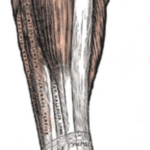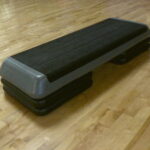Most people associate shin splints with athletes, dancers, or those who work out strenuously. But, while people who do a lot of running (like basketball players, aerobics instructors, and joggers) might be more prone to getting shin splints, you can get shin splints by doing something as simple as walking up a steep hill, especially if you haven’t worked out in a while.
Shin splints occur when undue pressure or stress is placed on your shinbone or tibia (that big bone at the front of your lower leg), and the tissues that connect your muscles to that bone. The result is pain, tenderness and, often, swelling along the side of your shinbone.
If you don’t take proper care of shin splints, they can turn into something more serious, like stress fractures. Luckily, in most cases, you can take care of shin splints yourself.
Use ice to reduce swelling caused by shin splints.
Ice will not only reduce swelling and inflammation, it will also alleviate some of the pain caused by shin splints. Wrap some ice, or an ice pack, in a towel, and apply it to the area where the pain is located for fifteen to thirty minutes three or four times a day, or as needed.
If you want to stay mobile while icing shin splints, wrap an elastic bandage around your leg and the cold compress. That way, you can still move around, while the ice works its magic on your shin splints.
Elevation also reduces swelling caused by shin splints.
Whenever you are at rest, whether watching television or taking a nap, elevate your leg so that your injury is above where your heart is. This will reduce the swelling caused by shin splints by draining fluid away from the injured area.
Wrap shin splints with an elastic bandage.
Using an elastic bandage or compression sleeve will help reduce the swelling and pain of shin splints. Don’t wrap an elastic bandage too tightly, or it could interfere with circulation. If your lower leg becomes numb, or your pain becomes worse, the elastic bandage is too tight.
If you have shin splints, take it easy.
Having shin splints doesn’t mean you have to give up on all physical activity. Depending on how severe the pain caused by your shin splints is, you can still workout daily. But you want to take it easy. Workout for thirty minutes instead of an hour. Switch from high-impact aerobics to something that will be easier on your injured leg. Instead of going for a run every morning, swim some laps at a local pool, or rent a bicycle and take it out for a daily ride. By switching from high-impact to more low-impact physical activities, you will be giving your leg a rest, which will allow shin splints will heal.
Try an over-the-counter remedies to relieve the pain of shin splints.
To reduce both the pain and swelling of shin splints, try ibuprofen (found in Advil). If ibuprofen upsets your stomach, acetaminophen (Tylenol) will relieve pain, although it won’t help with inflammation.
When should you see a doctor about shin splints?
While you can usually treat shin splints yourself, you should see a doctor if:
• Despite self-care (applying ice packs, cutting down on high-impact activities), shin splints aren’t healing. In fact, the pain and swelling seem to be getting worse.
• The pain started after an accident, like a fall, which could mean you’re suffering from something other than shin splints.
• The injured area is hot, inflamed, and feverish.
Shin splints are a painful condition that can affect your ability to participate in physical activities, or even just to walk a short distance. But, with the proper care, you can help speed up the healing of shin splints, and prevent them from turning into something more serious.




